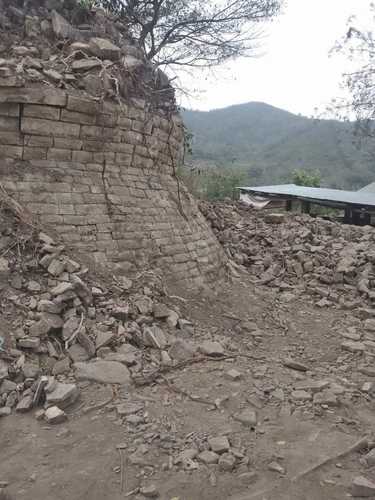Atlapexco, Hgo., The National Institute of Anthropology and History (INAH) began the registration and study of pre-Hispanic archaeological remains, including a circular construction, accidentally discovered last April by residents of the town of Tecacahuaco, municipality of Atlapexco, in the Huasteca region of Hidalgo.
According to residents of Tecacahuaco, the archaeological monument was discovered a few meters from the local secondary school 216, crossing a stream.
By chance, while building a pasture, the residents of the Tlamaya neighborhood of Tecacahuaco found the building hidden by weeds. In May, they notified the INAH Center in Hidalgo.
From that moment on, the institute began work to rescue, preserve and investigate the remains; archaeologists and specialists from the department have already made three visits to the site.
Osvaldo José Sterpone, head of INAH-Hidalgo, reported that the discovered building is 3.5 meters high.
He added that the staircase is well preserved and is flanked by two alfardas; it has an ornament in the position of v
and remains of a flattened clay. He said that it is most likely the substructure of a larger construction, which was 15 metres in diameter at its base.
The INAH official revealed that other vestiges have been found at the site, including the remains of a ball court structure 18 meters long, which remains covered in weeds.
We have started the photogrammetry and analysis that will allow us to document the characteristics of the buildings in the cards of the Public Registry of Monuments and Archaeological and Historical Zones, to give certainty and identity to this area of monuments.
the specialist stated.
He acknowledged that these are the first works carried out by the institute in Tecacahuaco. It is still unknown when they were built.
The head of INAH Hidalgo said that obsidian fragments were found, which means that they belong to the Postclassic period, which spans from 900 to 1521 AD.
In 1521, according to the official history of Mexico, the fall of the Great Tenochtitlan occurred to the hosts of Hernán Cortés and his allies, enemies of the Mexicas.
Sterpone added that the possibility that the foundation corresponds to that period would imply that Tecacahuaco was a settlement under the control of the Metztitlán lordship, hegemonic in the region during that period.
The toponym of Tecacahuaco is hollow stone place
Sterpone explained.
